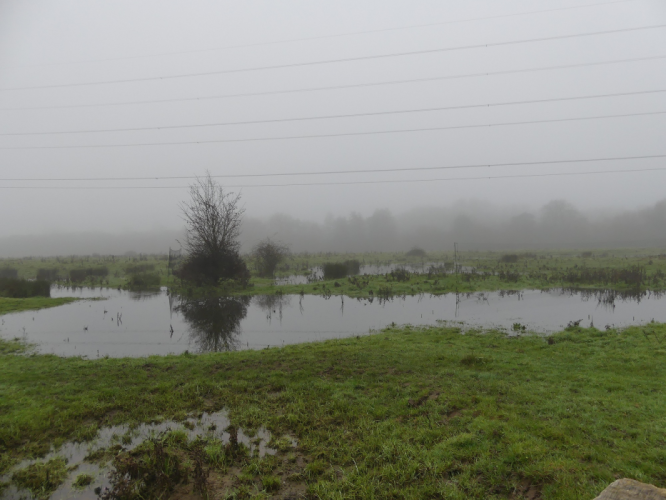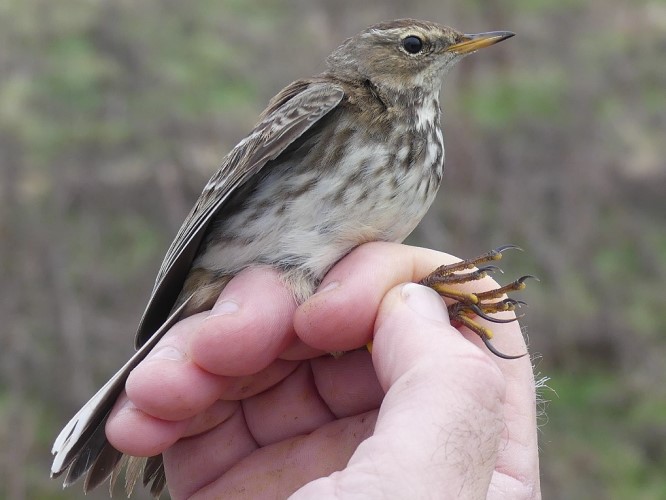Another NBN Trust member, Merlin Ringing Supplies, recently contacted us to tell us about one of their projects for us to share with the Network.
Written by Denise Lamsdell, Secretary Colne Valley Ringing Group
At the start of 2020 it was clear that restrictions necessary to control Coronavirus would have far reaching implications on volunteers who ringed birds for monitoring and data collection purposes in the UK, and therefore monitoring and information collection of birds in the UK. Realising that our usual activities could not continue throughout the year, we put some thought into how we might still, during 2020, make a meaningful contribution to conservation work, but in a slightly different way.
We were already running a very small scale project, within Colne Valley Ringing Group, to darvic ring Water Pipits (conservation status Amber) on Staines Moor that had commenced in 2017 and had very limited success. The project came about after ringing one or two Water Pipit on Stanwell Moor, adjacent to Staines Moor, in a handful of years since 2010.
Staines Moor is a well known wintering site for Water Pipit, Anthus spinoletta, a passage / winter migrant that visits the UK in relatively low numbers. The BTO currently states some 205 individuals are present each winter. The annual number of this altitudinal migrant ringed in this country is usually low, for example 10 in 2015, 12 in 2014, 1 in 2013 and 9 in 2012. We thought that a colour ringing project would be worthwhile, if catching was possible, and managed to get permission to target Water Pipits on Staines Moor. The proposed project aimed to aid monitoring of birds using the moor without the need for recapture, and give an indication of whether they winter at the site for the entire winter period. It would also inform on how faithful they are to the site each year, longevity of this species and with luck (if they are reported, from other locations and during the summer months) migration routes and where they breed.

Having been granted access to ring on Staines Moor, a session during November 2016 resulted in two birds being captured and ringed. Alpha numeric darvic rings were on order at that time and the project registered, although it was not until 12/01/2018 that the first coded ring could be fitted as Water Pipit are not easy birds to catch. Since that time only a further three birds had been marked between the date of that first bird’s capture and the end of the 2019/2020 catching window. There were resightings of birds remaining on the moor in February 2018 and March 2019.
Since so few birds were being caught it was decided to open the project up to other ringers around the country that were also catching Water Pipit in low numbers. In Spring 2020 the project was publicised on social media and a small number of individuals, groups and observatories contacted us, hoping to get involved with the project. The first birds return to the UK during October and participating ringers were registered as agents and in possession of darvic rings in time for the start of the 2020-2021 season. We currently have agents covering parts of Suffolk, Norfolk, Cambridgeshire, Lincolnshire, Dorset and Cornwall in addition to our original site in Surrey.

Restrictions were less stringent during late September and November, when the birds were returning for the winter, allowing ringers to get out and try for Water Pipit and although ringing is currently suspended during lockdown there are already 17 birds carrying darvic rings. The maximum known age from ringing data is almost 5 years, allowing plenty of time for possible future sightings in the UK or abroad. We already have two sightings of different birds remaining on the same sites where they were ringed in 2020, months later and hope to gather more information from further observations in the field, whether in the UK or mainland Europe.
Considering our good start in what has been a very challenging year, we intend to continue the project for no less than a further three years. We are also considering deployment of tracking technology should we be able to establish that birds can be retrapped in subsequent years.
We are most grateful to all those ringers who give generously of their time to contribute to this project, the owners and organisations that allow access to their land and our authorising body, the British Trust for Ornithology.
